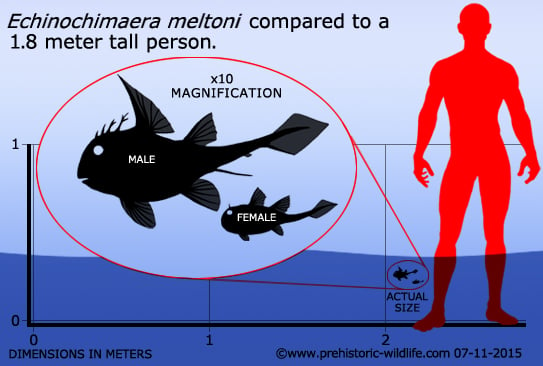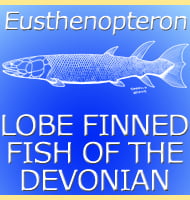In Depth
Though only small, Echinochimaera is still a very interesting fish that is known to have swum in the waters of what is now Montana during the Carboniferous. Echinochimaera had a deep round body that was propelled by a relatively thin tail which ended in a small caudal fin. This indicates that Echinochimaera was not a very fast swimmer, and as such may have cruised along in slower waters. Sexual dimorphism seen in the type species is quite extreme with males of E. meltoni growing to just over double the size of the females. At the time of writing E. snyderi is only known from juveniles, but comparison to similarly aged juveniles of E. meltoni suggest that E. snyderi would have been the larger species when fully grown.
Strong spines supported the fins, and while these may have provided support for them when brushing past submerged debris, as well as provided some defence against predators, they may have also served a display function. Indeed the males of E. meltoni had a differently shaped dorsal fin to the females, with the main spike being larger and pointing forwards. Males also had four pairs of spines on top of their heads whereas females only had one pair.
Further Reading
- Chondrichthyan life history styles as revealed by the 320 million years old Mississippian of Montana. - Environmental Biology of Fishes (Springer Netherlands) 27 (1): 1–19. - Richard Lund - 1990.









